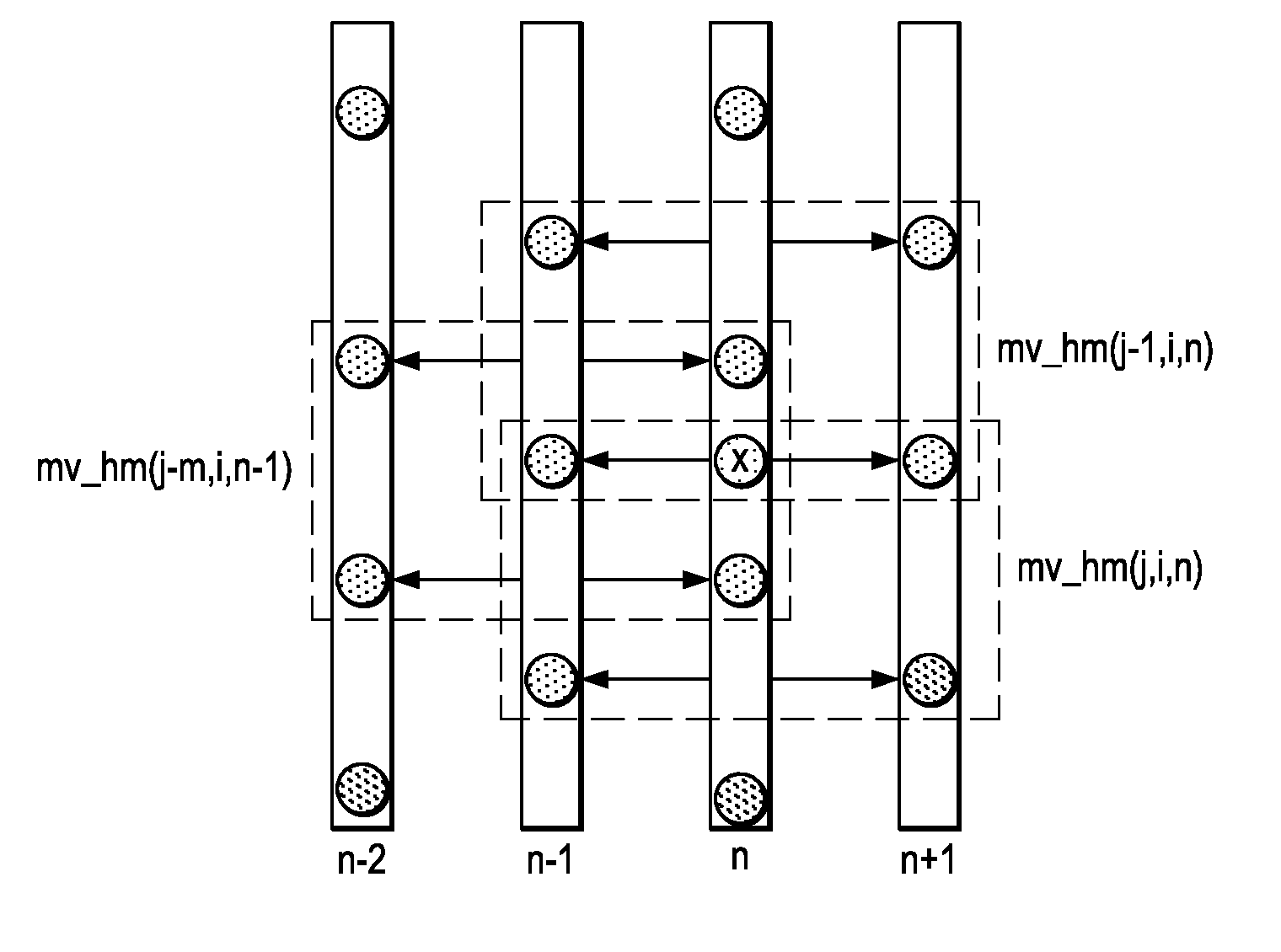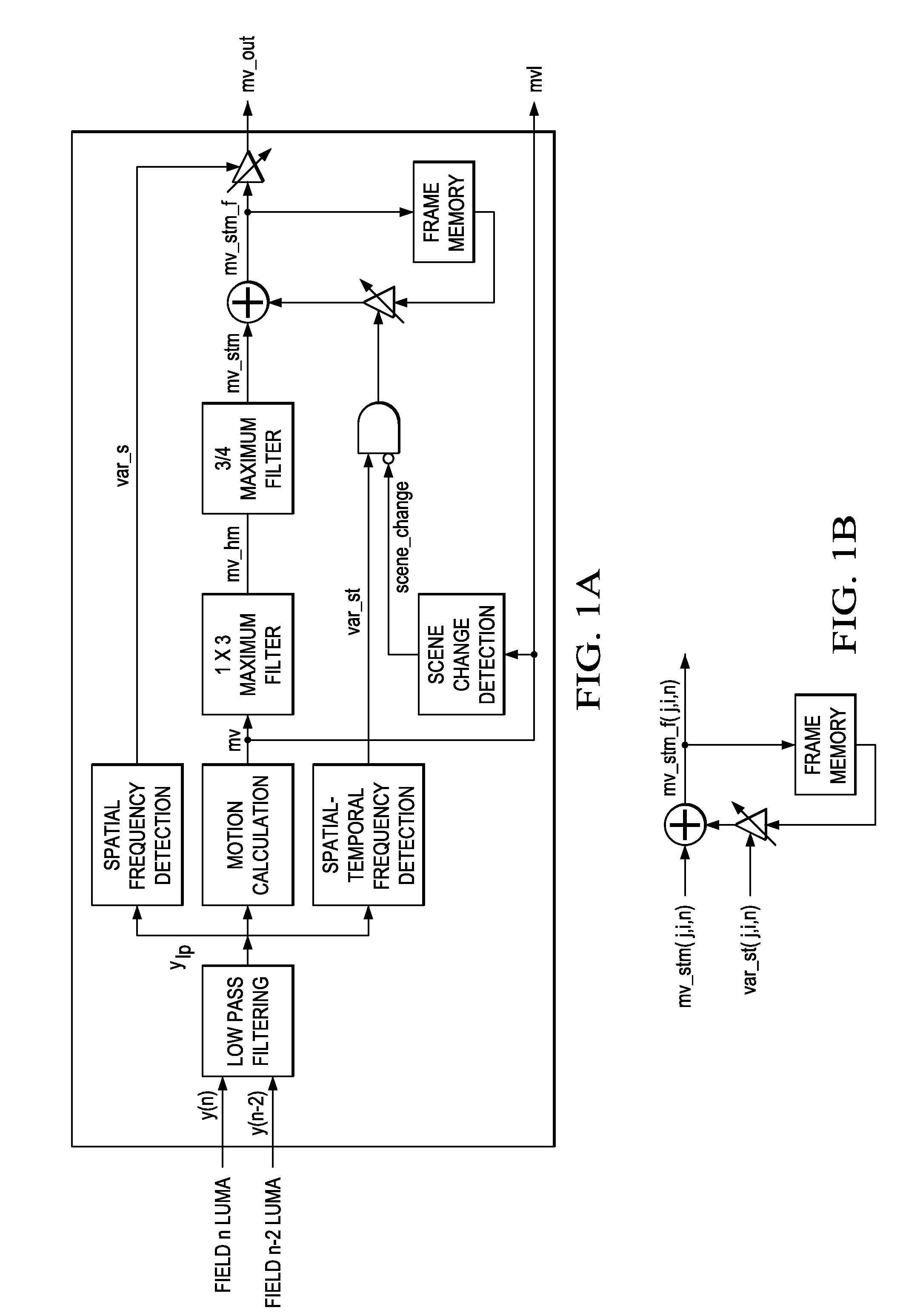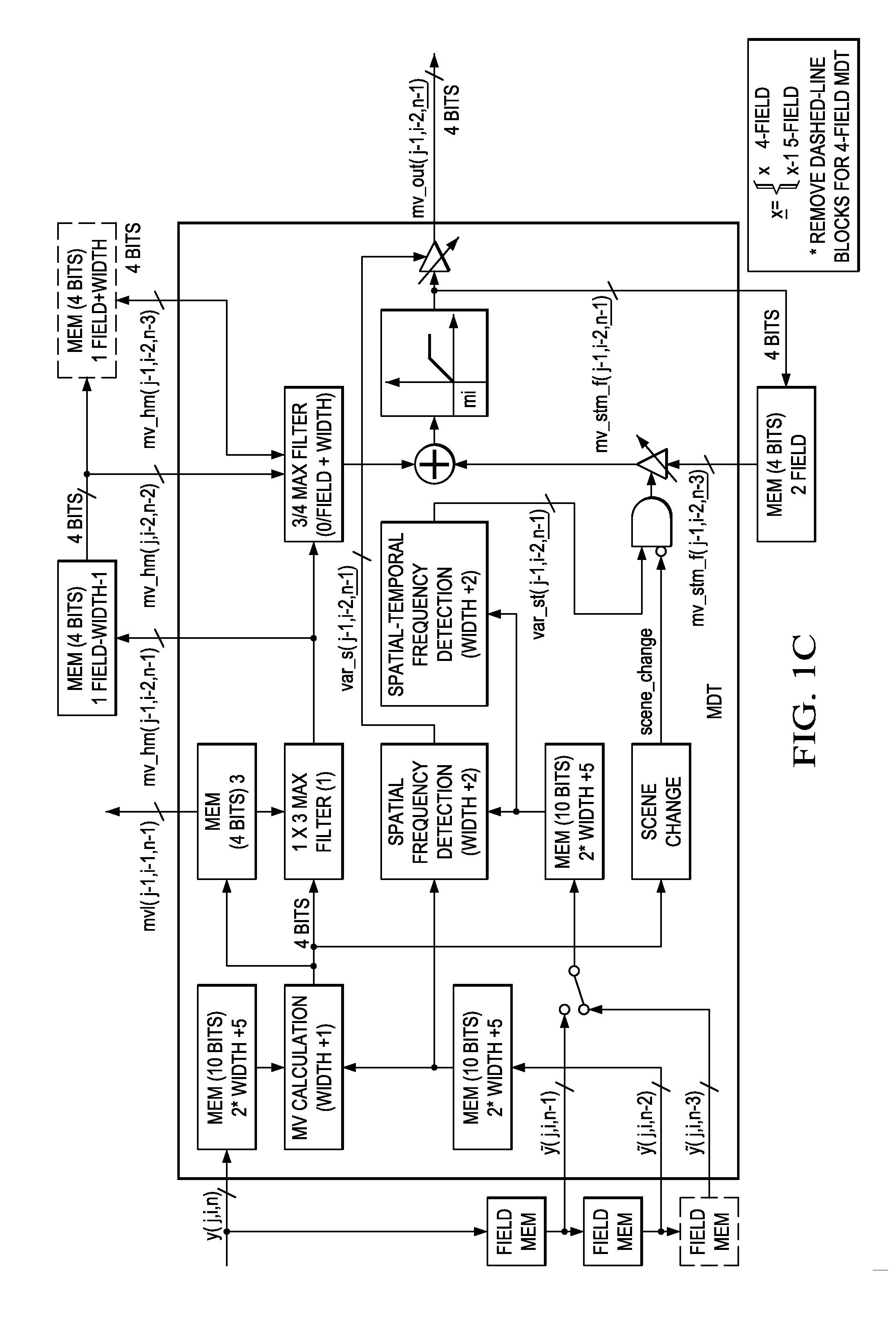Motion detection for interlaced video
a technology of interlaced video and motion detection, which is applied in the field of interlaced video motion detection, can solve the problems of poor conversion performance, high vertical frequency twitter effect for pictures, and spatial interpolation does not fully utilize the achievable vertical-temporal (v-t) bandwidth
- Summary
- Abstract
- Description
- Claims
- Application Information
AI Technical Summary
Benefits of technology
Problems solved by technology
Method used
Image
Examples
Embodiment Construction
[0033] The block diagram of a preferred embodiment motion detector is shown in FIG. 1A. The inputs to the system are luma signals (i.e., Y of YCbCr pixel color) from two neighboring fields with the same parity (two odd fields or two even fields). The outputs are the detected measures of motion (“mv” for motion value). Note that there are different versions of motion outputs, which can be used at different applications. For example, the output, mv1, can be used for temporal noise reduction applications, in which motion should only account for the difference of pixels from the two neighboring fields with the same parity. However, for the applications of de-interlacing, as discussed above, motion detection that only accounts for two fields very likely results in misdetection (false negative), and thus spatial and temporal maximum filtering is usually needed. The output, mv_out, can then serve for this purpose.
[0034] Preferred embodiment systems such as TV phones, PDAs, notebook comput...
PUM
 Login to View More
Login to View More Abstract
Description
Claims
Application Information
 Login to View More
Login to View More - R&D
- Intellectual Property
- Life Sciences
- Materials
- Tech Scout
- Unparalleled Data Quality
- Higher Quality Content
- 60% Fewer Hallucinations
Browse by: Latest US Patents, China's latest patents, Technical Efficacy Thesaurus, Application Domain, Technology Topic, Popular Technical Reports.
© 2025 PatSnap. All rights reserved.Legal|Privacy policy|Modern Slavery Act Transparency Statement|Sitemap|About US| Contact US: help@patsnap.com



